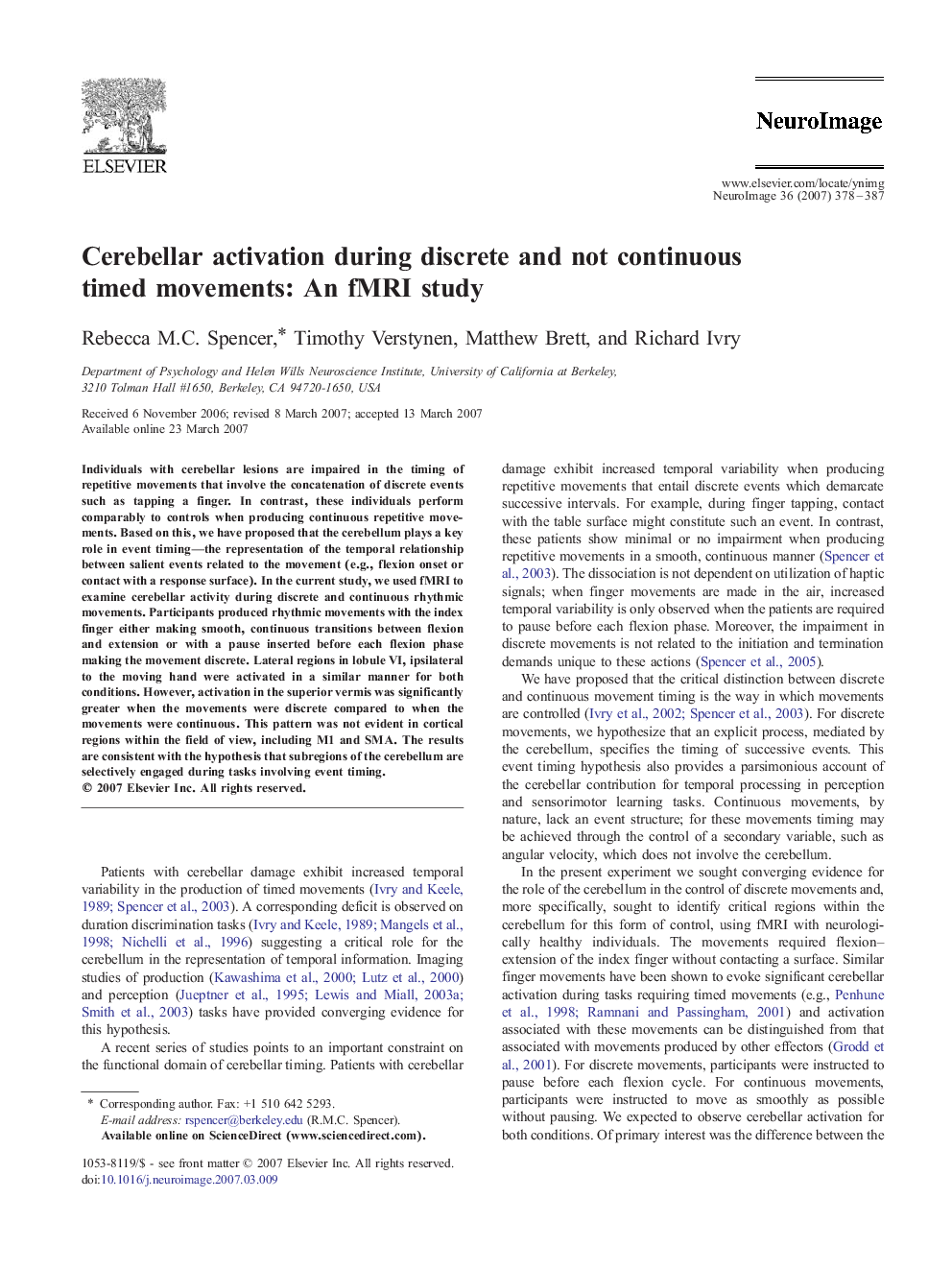| Article ID | Journal | Published Year | Pages | File Type |
|---|---|---|---|---|
| 6039940 | NeuroImage | 2007 | 10 Pages |
Abstract
Individuals with cerebellar lesions are impaired in the timing of repetitive movements that involve the concatenation of discrete events such as tapping a finger. In contrast, these individuals perform comparably to controls when producing continuous repetitive movements. Based on this, we have proposed that the cerebellum plays a key role in event timing-the representation of the temporal relationship between salient events related to the movement (e.g., flexion onset or contact with a response surface). In the current study, we used fMRI to examine cerebellar activity during discrete and continuous rhythmic movements. Participants produced rhythmic movements with the index finger either making smooth, continuous transitions between flexion and extension or with a pause inserted before each flexion phase making the movement discrete. Lateral regions in lobule VI, ipsilateral to the moving hand were activated in a similar manner for both conditions. However, activation in the superior vermis was significantly greater when the movements were discrete compared to when the movements were continuous. This pattern was not evident in cortical regions within the field of view, including M1 and SMA. The results are consistent with the hypothesis that subregions of the cerebellum are selectively engaged during tasks involving event timing.
Related Topics
Life Sciences
Neuroscience
Cognitive Neuroscience
Authors
Rebecca M.C. Spencer, Timothy Verstynen, Matthew Brett, Richard Ivry,
